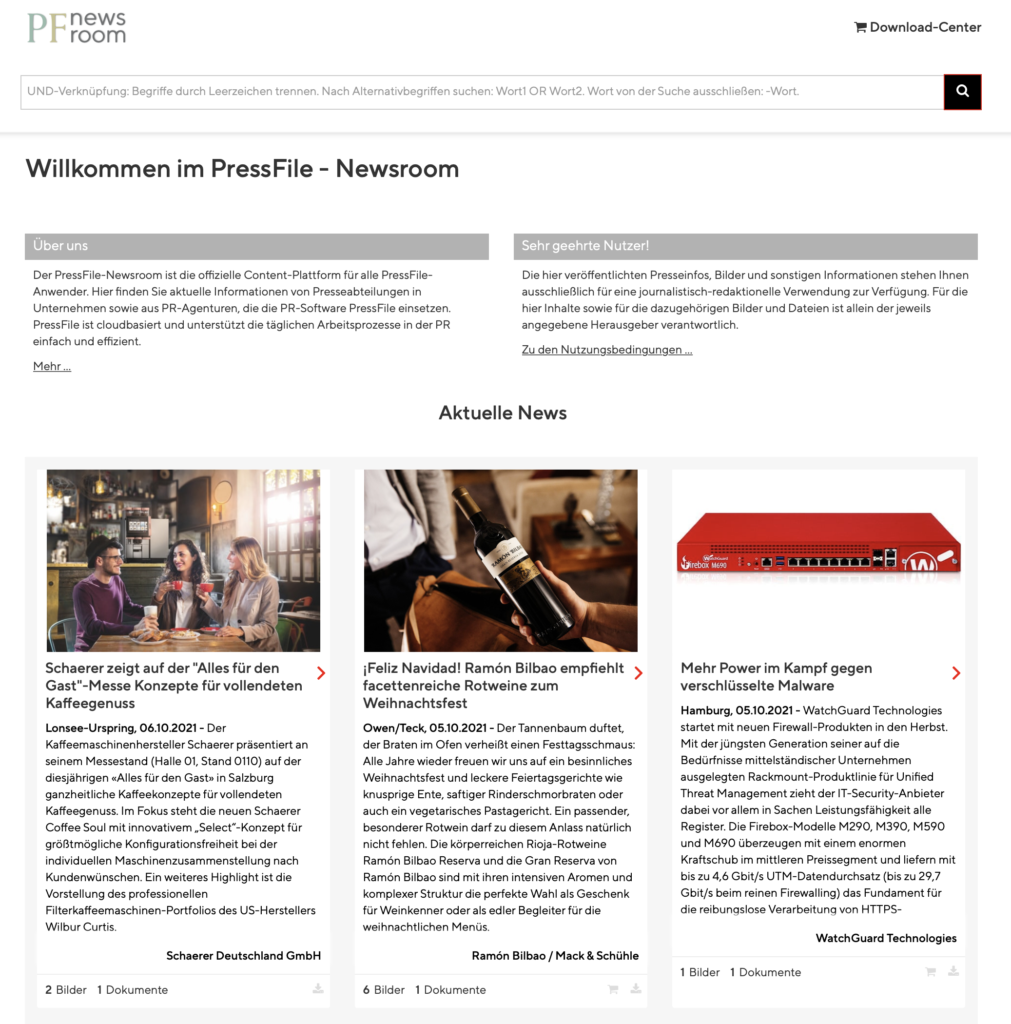Many corporate websites still present the same picture: Here the page for the press, there the one for downloading images and materials, and finally in another place a blog. Seek and ye shall find … but in any case it is laborious. It is much more efficient to make all content – whether text, images, graphics, films or podcasts – available centrally via a content hub.
Apart from WordPress, most editorial systems and CMS solutions are not designed for an integrated newsroom. Often it is because the systems are programmed from a developer’s point of view. The focus is not on the result, but on functional building blocks that are programmed and made available individually. WordPress is a laudable exception here in that the “post” is the central element. And this can be built up completely freely and enriched with images, audio, video or download options. However, there are limitations here as well. Large video files cannot be uploaded, nor can high-resolution images, because the upload limit hits at a file size of 2 to 5 MB or more. Although this can be increased manually, it is usually not useful. Because it is for the security and efficiency of the server as well as the WordPress website. This becomes significantly slower with large files, which in turn has a negative effect on the Google ranking. Now you can offer large files as a download link. But this also means more manual effort for uploading and compiling the links.
The newsroom is designed with the user in mind
Let’s imagine we are the editor and interested in one of the topics on the news page. How nice it would be if we could find everything that belongs to a story in that story. And that neatly structured and clearly presented. The content itself, the associated media content and documents, should also be easy to download, if possible with a mouse click. It would be perfect if the right people were listed with their contact details and I could share the story directly on social media.
This is exactly the concept of the PressFile newsroom: at the end of the process there is a content object that contains all these components.
Continuous and automated process
How is such a content object created? If the content producer had to tediously and manually assemble this at the end, the approach would remain similarly rudimentary as in most CMS solutions. That’s why feeding the newsroom portal at PressFile is already an integral part of “distributing” (press) information. The corresponding frontend is located right next to the tab for personalized mail delivery. Here, the user fills in all fields from the headline to the location, copies the text into the editor, uploads images and data and links the responsible contact person, who is also stored in the system with his contact details. With one click, everything is then published in the newsroom and automatically compiled into a content unit. The preview image also automatically gets a small overlay in the upper right corner with the date and location of the event. This way, the visitor will find everything in one place and can download the components either individually or collectively, in which case all data will be packed into a ZIP file during download.

The content producer can start the next process step directly at the other end. This is because the complete article is also loaded cleanly formatted into the mail editor at the click of a mouse and is available directly for personalized dispatch without any additional effort – for example, to a press distribution list that comes directly from PressFile’s PR management.

Media & Content Relations via the Content-HUB
PressFile can be used as an extended frontend for a content hub by companies or PR agencies via this functionality. Because, of course, the “News” field can be used for any kind of content. Another advantage: In contrast to most CMS solutions, the operation of the backend is extremely simple and self-explanatory. The posts can then be found and edited clearly and easily in their own history. This provides an integrated media and content relations system that efficiently supports the communications department or PR agency as well as visitors to the newsroom.

